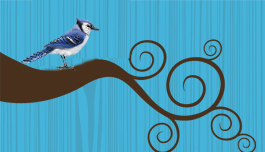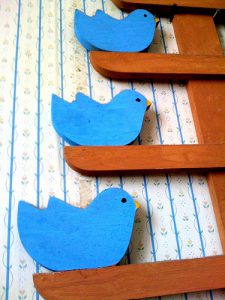Not a waste of time!
 I think I know what many birders who are still not on Facebook or blogging think. Social Media is a waste of time and it will only result in less time for birding. Can’t be bothered with that!
I think I know what many birders who are still not on Facebook or blogging think. Social Media is a waste of time and it will only result in less time for birding. Can’t be bothered with that!
I was thinking the same thing a year and a half ago. Therefor, I challenge you to read through this article and follow this course-workshop. Give it a chance! It is winter in the northern hemisphere so you may just have a little bit more time now to actually find out WHAT IT IS ALL ABOUT!
31 day Social Media workshop for birders
The workshop (I prefer to name it workshop instead of course as I also will be learning) will run for 31 days on my blog. There will not be a daily post. More likely 3-4 post per week, so you will have time to contemplate what you have learned. You will learn how to use social media more effectively and specifically for birders and for birding related companies. Here are a few topics.
- Listservers
- Facebook for birders
- Twitter for birders – including rare bird alerts.
- Forums.
- YouTube – sharing bird videos.
- Flickr and photo-sharing. Building a photo guide of the birds of the world.
- Stumble Upon, Digg, Reddit, Delcious and other social bookmarking services.
- Blogging. Would you like to have 100s of visitors daily to your blog?
This birding network that you will create using these tools will give you an enormous advantages anytime you look for an answer on a birding question, and ID problem, advice to buy a birding gadget or if you look how to bird a new destination more effectively and less expensively. Birding news will reach you fast and there may even be applications for Rare Bird Alerts.
Part of the resistance to Social Media among birders is that they feel they are doing quite well with the existing channels. It is hard to see the benefit of something new if you haven’t tried it…and if you try it and your mates are not on and it take ages until you actually find a lot of other birders to engage with, it becomes a bit boring and you will leave your Facebook and Twitter without activity, convinced it is not for you.
I understand you perfectly. Social Media will appear as a waste of time. But say we get 1000 participants to this course/workshop and we all started to connect between us, start to share what we have learned about social media with our existing network who are not following the workshop. If each of us have some 50 connections in average, it means the network can reach 50 000 birders. That is for starters. With the expansion of Facebook this is already happening and with 10 years millions of birders will effectively be connected this way. If we look at the same equations regarding how birders can become more effective in conservation issues and how we can recruit a new generation of birders, Social Media become the means to achieve this.
My background
I have been on Facebook for some 21 months and on Twitter for 18 months. Both have served to connect with other birders.
I have been blogging for about a year regularly on this site. I had blogged before, but a year ago, I moved my Blogger blog to be housed on my company site and I became part of the community of bloggers at NatureBlog Network. I realized then that frequent blogging could be a way to get more birders also find my commercial site.
Soon I also realized that both Twitter and Facebook were excellent tools to tell others about my blog – and thus indirectly my business.
In spite of these early notions, I worry much less about driving traffic to my commercial site today, but rather just blog on topics that I believe will be interesting to other birders. In the end, anyone interested in the commercial part of my web-site will find it looking in the about pages. I have no need to glue it to your face. In the end, you may – or may not – chose to purchase what I offer, but it will often be after we already have gotten to know each other.
One thing that has become very clear to me as I have been on this journey, is that birders in general know very little about why social media can be just mind-blowing for birders. This, I think, is the main objective with this workshop. To show you why Social Media for birders rocks!!
Three Social Media Mantras
When social media is best, there are three pillars – three main rules to live by.
- Listen
- Engage
- Share
Remember this as your Mantra. You shall hear those words again and again.
Sign up
The workshop will be published on my blog, but in order to know immediately when a post have been posted you should sign up for the Social Media for birders challenge filling in the form below. In these messages there will also be specific tasks for you to complete so you can put your achieved new knowledge into practice. It is through the mailing list that we shall be building a community. By signing up and saving all the messages in a specific folder you shall have all the items ready at hand when you need them for reference.
Finally, please share the link to this page with as many birders you know. We will come out stronger after this, building connections for conservation, for recruiting new members to the birding community, for finding info on birding in foreign countries including local guides and operators, for getting the ID:s on your photographed mystery birds, for helping newcomers to get into the hobby without get turned off before even gotten started because now they have access to more experienced birders.
Now sign-up, please!
Here is an updated post with some more justification to share the news about this workshop and also contains a disclaimer which reveals my motives to organize this event for FREE!






 With 300 million users, Facebook should not need a specific presentation to you. However, I have seen that many of my birding friends still have not jumped on the band wagon or have not realized the potential it has for birders to connect with each other as a community. It is the perfect place to search for advice when planning for a birding trip. And you don’t have to be real friends to be friends on Facebook. Having birdwatching in common is at least for me enough to connect with you through Facebook. Read the full article:
With 300 million users, Facebook should not need a specific presentation to you. However, I have seen that many of my birding friends still have not jumped on the band wagon or have not realized the potential it has for birders to connect with each other as a community. It is the perfect place to search for advice when planning for a birding trip. And you don’t have to be real friends to be friends on Facebook. Having birdwatching in common is at least for me enough to connect with you through Facebook. Read the full article:  To maintain an on-line web-log (blog) has become extremely popular in recent years. Digital photography and free resources such as Blogger (by Google) and My Space has made it easy for birders to also publish their own tales and photos of birds on their own site at no cost. In contrast to Facebook you may share with everyone on a blog, not only with your near friends. I too have had a few blogs that I have nourished all to rarely, until I recently understood that a regular blogging section on our company page could actually bring traffic to the main web-page, as well as improve ranking on search the engines. I down-loaded the WordPress blogging platform to my web-page. This platform is also free and popular among businesses because it can be uploaded on your own domain and it has various plugins that makes it easier for search engines to find your posts. You find more info about blogging and how to connect with other bird bloggers and get traffic to your blog in my
To maintain an on-line web-log (blog) has become extremely popular in recent years. Digital photography and free resources such as Blogger (by Google) and My Space has made it easy for birders to also publish their own tales and photos of birds on their own site at no cost. In contrast to Facebook you may share with everyone on a blog, not only with your near friends. I too have had a few blogs that I have nourished all to rarely, until I recently understood that a regular blogging section on our company page could actually bring traffic to the main web-page, as well as improve ranking on search the engines. I down-loaded the WordPress blogging platform to my web-page. This platform is also free and popular among businesses because it can be uploaded on your own domain and it has various plugins that makes it easier for search engines to find your posts. You find more info about blogging and how to connect with other bird bloggers and get traffic to your blog in my  I am sure I am loosing some people now. Twitter seems to most birders like a complete waste of time. I could not have agreed more, when I first looked at this Social Media fad. I have changed my mind since. If you want to learn more how Twitter can be useful for birders check out
I am sure I am loosing some people now. Twitter seems to most birders like a complete waste of time. I could not have agreed more, when I first looked at this Social Media fad. I have changed my mind since. If you want to learn more how Twitter can be useful for birders check out  This is an interesting exercise. Say you were to name the birds in your country or your state that are or could be tourism attractions for non-birders. These are the kind of birds that everyone likes with a lot of Wow-factor. The kind of attraction one would make a detour to see. They could be arena birds displaying in leks, big colonies, penguins, hummingbirds, places of concentrated migration or just very special birds.
This is an interesting exercise. Say you were to name the birds in your country or your state that are or could be tourism attractions for non-birders. These are the kind of birds that everyone likes with a lot of Wow-factor. The kind of attraction one would make a detour to see. They could be arena birds displaying in leks, big colonies, penguins, hummingbirds, places of concentrated migration or just very special birds. Do you feel that there is no way you can keep up with the world birding. There are just too many birds to see. Instead of trying to see them all, why not just concentrate on the top 1000 birds. The most magnificent and special birds that you would like to see during your lifetime. Not only does this make your targets more manageable, but it all also invites you to be less fanatic during your holidays with your non-birding spouse and just concentrate on those special birds that maybe he/she would also enjoy. This idea will summit with a book, and you can help decide which species to include. Click this link:
Do you feel that there is no way you can keep up with the world birding. There are just too many birds to see. Instead of trying to see them all, why not just concentrate on the top 1000 birds. The most magnificent and special birds that you would like to see during your lifetime. Not only does this make your targets more manageable, but it all also invites you to be less fanatic during your holidays with your non-birding spouse and just concentrate on those special birds that maybe he/she would also enjoy. This idea will summit with a book, and you can help decide which species to include. Click this link:  I predict that birding and nature watching will grow very fast in the coming years. Why? Because, the birders are very good at promoting and recruiting, by putting a pair binoculars and field guide in the hands of a teenager? Hardly! That is so 20th century!
I predict that birding and nature watching will grow very fast in the coming years. Why? Because, the birders are very good at promoting and recruiting, by putting a pair binoculars and field guide in the hands of a teenager? Hardly! That is so 20th century! Chiggers can be a nuisance and difficult to protect oneself from. Often one takes measures after the damage is already done. Here is a
Chiggers can be a nuisance and difficult to protect oneself from. Often one takes measures after the damage is already done. Here is a  I have the ambition but not always the time to train to become a half decent Marathon runner for my age. My dream is to be able to qualify for the oldest marathon in the world – the classic Boston Marathon. The problem is that there was no Marathon in Peru that was internationally recognized, so I had my mind to train for a Marathon in the US late in the year. But in April I still had not even gotten started to train and I hear that all of a sudden there would be a Marathon in Lima May 31 and the first one to be a qualifying race for Boston and only 5 and half weeks away. I should give it a try although time was short. I needed yet another stimulus and challenge and making my race a fund-raiser for the conservation of Satipo road and for eco-tourism infrastructure was a perfect match. Below follows a series of blogposts on the marathon and the Satipo road project. We are happy to been able to work on this together with Rainforest Partnership.
I have the ambition but not always the time to train to become a half decent Marathon runner for my age. My dream is to be able to qualify for the oldest marathon in the world – the classic Boston Marathon. The problem is that there was no Marathon in Peru that was internationally recognized, so I had my mind to train for a Marathon in the US late in the year. But in April I still had not even gotten started to train and I hear that all of a sudden there would be a Marathon in Lima May 31 and the first one to be a qualifying race for Boston and only 5 and half weeks away. I should give it a try although time was short. I needed yet another stimulus and challenge and making my race a fund-raiser for the conservation of Satipo road and for eco-tourism infrastructure was a perfect match. Below follows a series of blogposts on the marathon and the Satipo road project. We are happy to been able to work on this together with Rainforest Partnership. Last year I got the privilege to visit four new lodges on the Manu circuit owned by Wanamei – a tour company formed by the 8 communities of three native ethnic groups Yine, Matsiguenka and Harakmbut. I immediately saw a potential for a niche marketing these lodges for birders and we set up some programs.
Last year I got the privilege to visit four new lodges on the Manu circuit owned by Wanamei – a tour company formed by the 8 communities of three native ethnic groups Yine, Matsiguenka and Harakmbut. I immediately saw a potential for a niche marketing these lodges for birders and we set up some programs.  One of the nice things about writing a somewhat popular blog is that sometimes one gets a free book. The new biography
One of the nice things about writing a somewhat popular blog is that sometimes one gets a free book. The new biography  It is time to present to you our staff for the season 2009-2010. Here is
It is time to present to you our staff for the season 2009-2010. Here is 